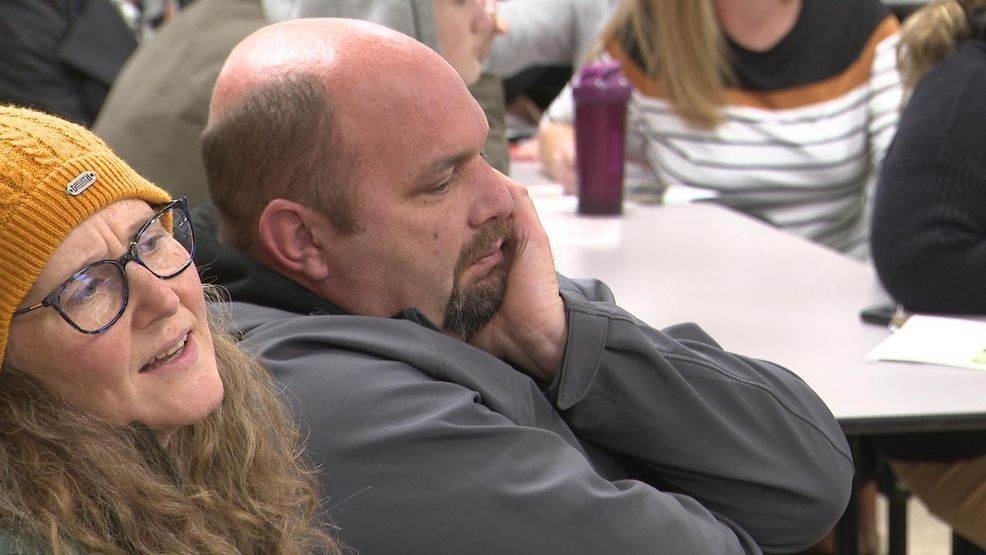CEDAR RAPIDS, Iowa — Cedar Rapids’ Career Pathways program, introduced as an initiative to better prepare students for their futures, is facing mounting criticism from parents and teachers alike. The program, which seeks to align students’ high school experiences with career-focused pathways, has sparked concerns about its rollout, communication, and impact on educators and students.
Superintendent Dr. Tawana Grover, in an interview with Iowa’s News Now, addressed these concerns, including allegations from teachers about a “culture of fear” within the district and parents’ demands for a delay in implementing the program.
Dr. Grover emphasized the intent behind Career Pathways as a means to improve graduation rates and post-graduation outcomes, explaining, “We’ve always been looking at how can we get better? How can we service more students and ensure that we have more students graduating in a way that they’re prepared for life?” She added that the plan is not final and that parents will have a say, “That’s the point we wanna make—that the plan is not final, that we want our families’ input.”
The program’s model will require incoming ninth graders to choose specialized courses tied to specific career pathways, offering targeted career preparation. However, the pathways available differ by school, prompting questions about equity and logistics. During open house meetings, parents could be seen refreshing the district’s online Q&A form, taking screenshots, and discussing their frustrations with each other. Many of the comments submitted online questioned the program’s accelerated timeline, transportation concerns, and potential effects on current offerings, such as advanced placement (AP) classes.
Despite the district’s reassurances, a petition asking for a delay in the rollout has gathered over 500 signatures. Parents are calling for more transparency, with one parent, Nate McKenzie, stating, “At the end of the day that’s mainly the main concerns right? Like if you just give a yes or no general answer, that’s not really good enough for most people.”
When asked about these concerns, Dr. Grover said, “People may look at the fact that there are 500 questions out there – we have over 15,000 students in our school district.”
Dr. Grover pushed back against calls for a delay, saying, “I believe what we have in front of us is an opportunity to get accurate information out to our families. There were so many misrepresentations of the program itself.” When asked directly whether delaying the program was at all on the table, Grover would not give a definitive answer, replying, “I think what’s on the table is the opportunity for our families to come in, and by having them give us more input, then we are gonna have a better understanding of what our families want.”
The controversy extends to district staff, with teachers voicing concerns about how the program’s implementation has affected their work environment. One teacher, speaking anonymously out of fear of retaliation, described a “culture of fear” in the district. “Most people in my building feel afraid to speak out against this. We’ve also had large group meetings where people from multiple high schools, they talk about being afraid,” the teacher said. “There has been a lot of kind of rhetoric around, like, ‘Get on board with this, or we’ll just fire you.’ Our jobs have been threatened, administrative positions have been threatened, over and over and over.”
The teacher also highlighted frustrations with how the program was developed, stating, “When it started, when we started learning the way it was going to be implemented, it felt like we were really completely overhauling what we already do.” They described a lack of teacher input, saying, “Outside companies have been hired, outside consultants have been brought in, and no teacher input has been taken. For example, the decision to eliminate one of the science courses—no teacher input was taken into that.”
The teacher expressed concerns about the potential loss of electives due to the program’s structure. “We’re going to have to give up the electives to cover all of these biology classes. And that doubling up of courses is going to last for the next three years while these kids move through their high school career,” they said.
In response to these claims, Dr. Grover said, “That is quite interesting to hear, and I do want to also take into account that we also have 3,000 staff members within our school district.” She pointed to existing avenues for feedback, such as a monthly teacher cabinet meeting. “Well, we do have a safe space. I’ll give you one example of a safe space. I have a teacher cabinet. We meet on a monthly basis,” she said. “The [teachers] want more transparency, and they want more inclusiveness. They said that directly to me, and I received that.”

